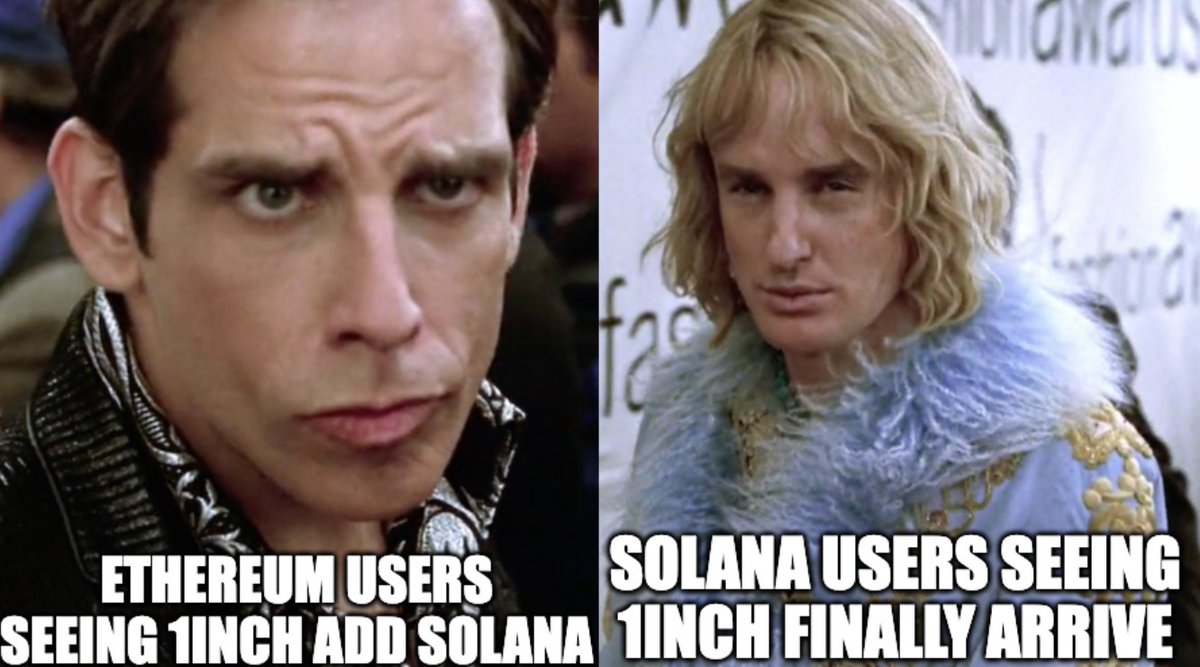Růst kryptoměn otevřel cesty pro obacentralizovanéa decentralizované burzy. Ty pak rozptýlí potřebu autoritativní postavy.Decentralizované burzy (DEX)Abyste mohli začít obchodovat, stačí, aby se uživatelé připojili k blockchainu. Jednou z těchto burz je 1inch (1INCH).
Co je 1inch
1inch je decentralizovaná burza, jejímž cílem je poskytnout uživatelům nejlepší ceny pro obchodování s kryptoměnami napříč různými blockchainy. Agregací likvidity z různých zdrojů DEX efektivně rozděluje obchody na různých burzách, aby zajistila co nejpříznivější ceny pro uživatele. Za tímto účelem 1inch naskenuje různé burzy DEX, aby dokázala identifikovat nejlepší dostupné ceny a bezproblémově přesměrovávala obchody uživatelů, aby maximalizovala jejich výsledky obchodování.
Tým 1inch
1inch spoluzaložili Sergej Kunz a Anton Bukov. Tým v 1inch zahrnuje mimo jiné experty na technologie, blockchain, marketing a prodej, kteří přispívají k rozvoji a provozu platformy.
Společnost 1inch také získala podporu od významných investorů a firem působících v oblasti rizikového kapitálu, včetně společností Binance Labs, Pantera Capital a dalších významných VC.
Jak 1inch funguje
1inch funguje jako agregátor decentralizovaných burz, který neustále monitoruje ostatní decentralizované burzy (DEX), aby pro uživatele vyhledával nejkompetitivnější sazby kryptoměn. Využitím chytrých kontraktů 1inch efektivně směruje obchody zákazníků na určené burzy DEX, které nabízejí nejlepší ceny. Tento přístup vyhledávání prostřednictvím různých burz pomáhá prohloubit likviditu a poskytnout uživatelům přístup k nejvýhodnějším cenám na trhu.
Za účelem dalšího prohloubení likvidity nabízí 1inch uživatelům možnost zúčastnit setěžba likvidity. Výměnou za poskytování likvidity platformě mohou uživatelé získávat odměny ve formě dalších tokenů.
Nativní token 1inch: 1INCH
Nativní token 1inch, 1INCH, pohání agregátor likvidity, protokol likvidity a DAO. Kromě toho, že je 1INCH token ERC-20, slouží jakogovernance token. držitelům tokenů 1INCH jsou udělena hlasovací práva a mohou se aktivně podílet na formování budoucnosti protokolu. Za tímto účelem mohou hlasovat ve prospěch nebo proti navrhovaným změnám a novým parametrům protokolu.
Tokenomika 1INCH
Celkový objem tokenů 1INCH je 1,5 miliardy a objem tokenů v oběhu je přes 413 milionů. Kromě hlasovacích práv mohou držitelé tokenů 1INCH získávat odměny v podobě airdropů držbou tohoto tokenu.
Jak stakovat 1INCH
Držitelé tokenů 1INCH mohou získávat odměny, když do protokolu uzamknou určité procento svých držených prostředků.Stakingna protokolu 1inch je přímočarý. Nejprve spusťte 1inch dApp. Najeďte na kartu DAO a klikněte na Staking z rozevírací nabídky. Pak zadejte částku 1INCH, kterou chcete stakovat, nastavte dobu uzamčení a klikněte naUdělit oprávnění ke stakingu. Podepište transakci ve svém připojeném zařízenípeněženkaproces dokončete. Po dokončení získáte Unicorn Power, který můžete delegovat na řešitele a začít dostávat odměny.
Počet případů použití 1INCH:
1INCH je více než utility token; hraje klíčovou roli při správě protokolu, což držitelům tokenů umožňuje hlasovat o návrzích předložených komunitou. Kromě toho 1INCH zajišťuje proces těžby likvidity prostřednictvím stakingu. Stakováním svých tokenů 1INCH mohou uživatelé přispívat k likviditě protokolu a získávat za to odměny.
Distribuce 1INCH
1INCH se rozděluje takto:
- 30 % je vyhrazeno pro pobídky komunity.
- Pro hlavní přispěvatele je určeno 22,5 %.
- 18,5 % se přiděluje první sadě podporovatelů.
- 14,5 % je vyhrazeno pro fond pro růst sítě.
- 12,2 % se přiděluje druhé sadě podporovatelů.
- 2.3 % je přiděleno malým podporovatelům.
Co budoucnost drží za 1inch
1inch, který se označuje za předního agregátora decentralizovaných burz (DEX), poskytuje likviditní fond, možnosti farmingu tokenů a skutečně decentralizovaný governance model. Tyto funkce odlišuje agregátor DEX od ostatních. Díky týmu, který se zaměřuje na integraci pokročilých softwaru a nástrojů, je 1inch připraven udržet si relevanci jako přední agregátor decentralizovaných burz (DEX).



























Sociální sítě